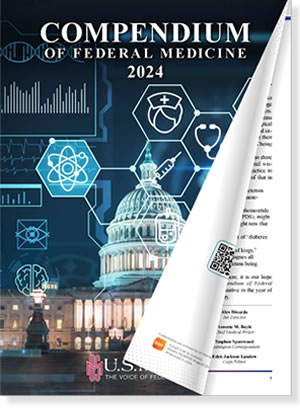ALBANY, NY — Red blood cell production is stimulated with the combination of sodium-glucose cotransporter-2 inhibitors (SGLT-2i) and testosterone replacement therapy TRT), based on clinical trial findings. Whether the dual therapy increases the risk of erythocytosis in a real-world setting remains unclear, however.
A team led by the Stratton VAMC and Albany Medical College conducted a retrospective nationwide cohort study of U.S. veterans with Type 2 diabetes (T2D) and baseline hematocrit between 38 and 50% who were prescribed SGLT-2i and/or TRT between March 2013 and October 2022 and had adequate adherence based on the proportion of days covered of more than 80%.
For the study published in the Journal of Clinical Endocrinology & Metabolism, the researchers divided patients into three groups: SGLT-2i only, TRT only or combination therapy. They then calculated the odds ratio (OR) of new erythrocytosis cases defined as a hematocrit level of greater than 54% within 365 days of therapy initiation. Factors taken into consideration included baseline hematocrit, age, BMI, obstructive sleep apnea, diuretic use and smoking status.1
The results indicated that 1.4% of the entire cohort of 53,971 patients with T2D developed erythrocytosis. The researchers reported that, in unadjusted analyses, the OR of new onset erythrocytosis was higher in the combined SGLT-2i and TRT group compared with the SGLT-2i or TRT group alone (4.99, 95% CI (3.10-7.71) and 2.91, 95% CI (1.87-4.31), respectively).
“In the models adjusted for baseline characteristics, patients on combination therapy had significantly higher odds of erythrocytosis compared to those on SGLT-2i (OR 3.80, 95% CI (2.27-6.11)) or TRT alone (OR 2.49, 95% CI (1.51-3.59)),” the authors pointed out. “Testosterone delivery route (topical vs. injectable) did not modify increased odds of erythrocytosis.”
The study team concluded, “For the first time, we demonstrated that in a large cohort of patients, combined therapy with SGLT-2i and TRT is associated with increased erythrocytosis risk compared with either treatment alone. Given rising prevalence of SGLT-2i use, providers should consider periodic hematocrit assessment in persons receiving both SGLT-2i and TRT.”
- Gosmanov AR, Gemoets DE, Schumacher KA. Increased risk of erythrocytosis in men with type 2 diabetes treated with combined sodium-glucose cotransporter-2 inhibitor and testosterone replacement therapy. J Endocrinol Invest. 2024 Mar 27. doi: 10.1007/s40618-024-02350-1. Epub ahead of print. PMID: 38536657.

